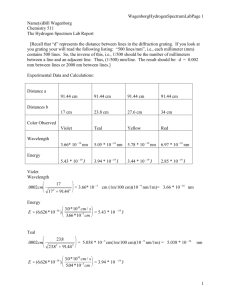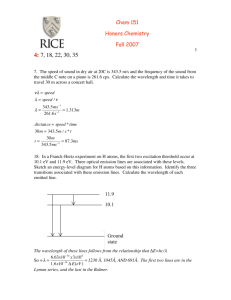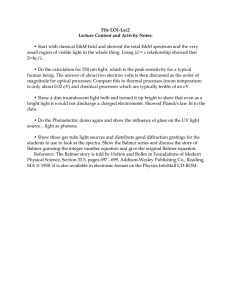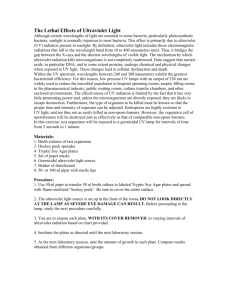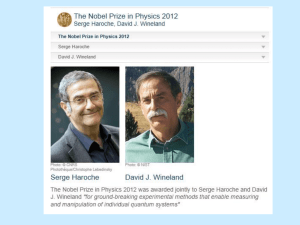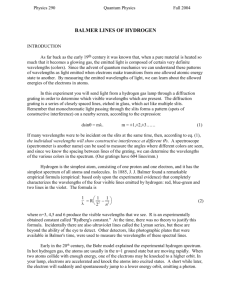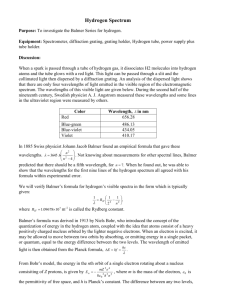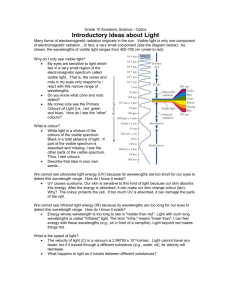At the point that Rutherford made his discovery of the nucleus
advertisement
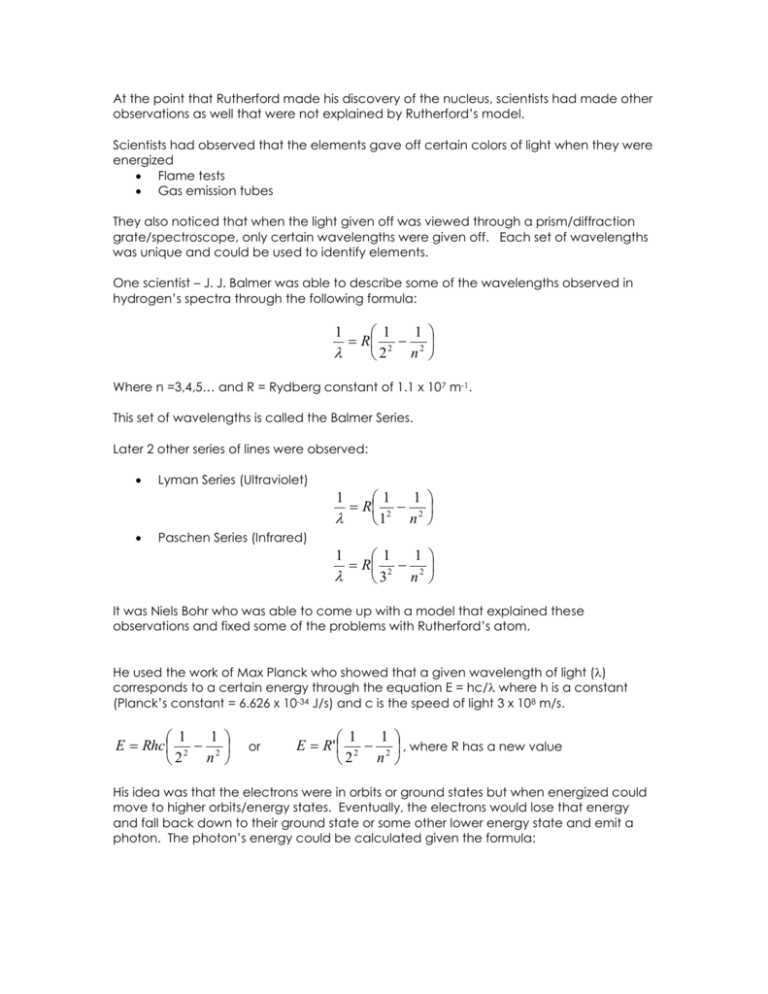
At the point that Rutherford made his discovery of the nucleus, scientists had made other observations as well that were not explained by Rutherford’s model. Scientists had observed that the elements gave off certain colors of light when they were energized Flame tests Gas emission tubes They also noticed that when the light given off was viewed through a prism/diffraction grate/spectroscope, only certain wavelengths were given off. Each set of wavelengths was unique and could be used to identify elements. One scientist – J. J. Balmer was able to describe some of the wavelengths observed in hydrogen’s spectra through the following formula: 1 1 R 2 2 n 2 1 Where n =3,4,5… and R = Rydberg constant of 1.1 x 107 m-1. This set of wavelengths is called the Balmer Series. Later 2 other series of lines were observed: Lyman Series (Ultraviolet) 1 1 R 2 2 n 1 1 Paschen Series (Infrared) 1 1 R 2 2 n 3 1 It was Niels Bohr who was able to come up with a model that explained these observations and fixed some of the problems with Rutherford’s atom. He used the work of Max Planck who showed that a given wavelength of light () corresponds to a certain energy through the equation E = hc/ where h is a constant (Planck’s constant = 6.626 x 10-34 J/s) and c is the speed of light 3 x 108 m/s. 1 1 E Rhc 2 2 n 2 or 1 1 E R' 2 2 , where R has a new value n 2 His idea was that the electrons were in orbits or ground states but when energized could move to higher orbits/energy states. Eventually, the electrons would lose that energy and fall back down to their ground state or some other lower energy state and emit a photon. The photon’s energy could be calculated given the formula: 1 1 E R' 2 2 where nlower is the ground state and nupper is the excited state. n lower nupper The larger the change in energy states, the more energy is given off…so the more “purple” the light. Remember ROY G BIV. As you go from red to violet in the visible spectrum, you are increasing energy. Electrons making large transitions will give off more violet light. In some cases – even ultraviolet light. Notice that farther away from the nucleus, the energy levels start to converge (get squished together). This means that the transition between energy 6 and 5 does not give off the same color of light as 1 and 2. Series: Lyman – occurs in ultraviolet region (high energy). Transition is from upper energy level to first energy level Balmer – occurs in visible region. Transitions occur between upper energy level to second energy level. Paschen – occurs in infrared region (low energy). Transitions occur between upper energy level to third energy level.
